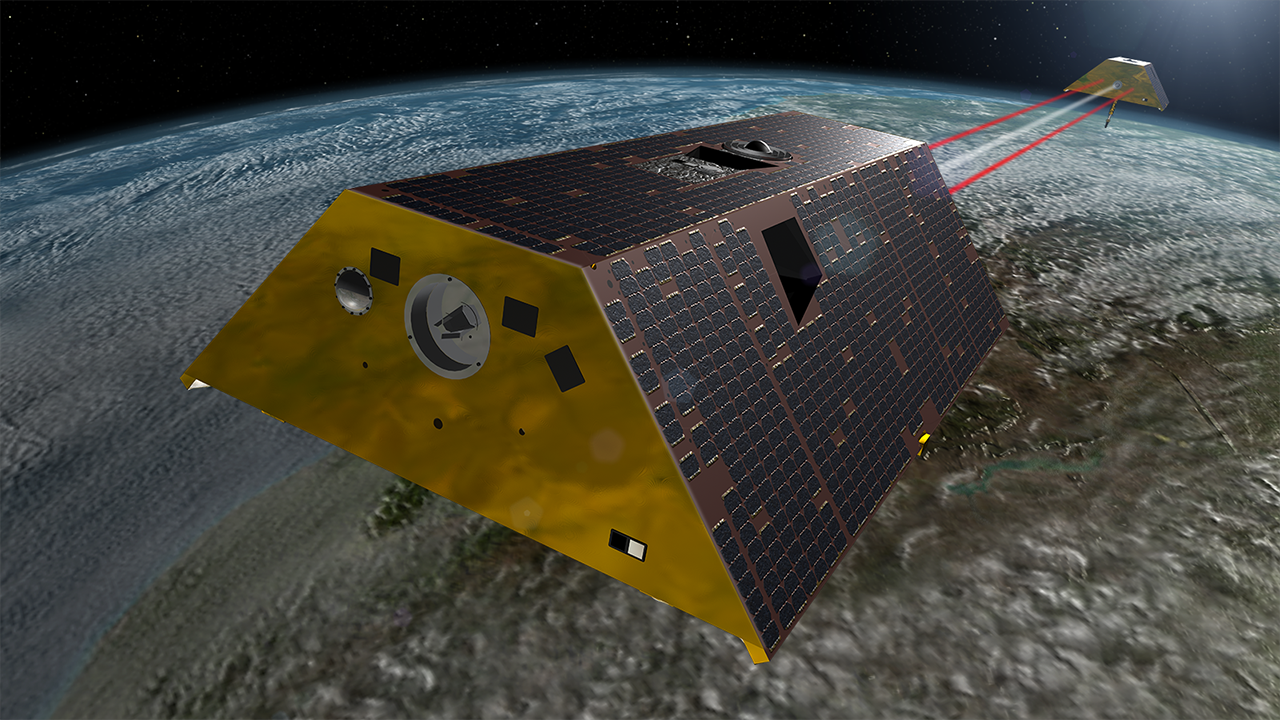Spacecraft

GRACE-FO will use the same method to map gravitational fields as GRACE and the lunar GRAIL missions. Like its predecessors, GRACE-FO consists of two nearly identical satellites. One follows the other along the same orbit as both continually measure the distance between them by means of microwave ranging instruments.
As the lead satellite approaches a region of greater gravity (for example, a mountain or — in the case of Earth — a large mass of ice or pool of underground water), it is pulled a little bit farther ahead of the trailing satellite, slightly increasing the distance between them. Then, as the lead satellite flies past the high-gravity area, it gets pulled slightly back while the trailing satellite, which is now approaching the gravitational mass, is pulled slightly ahead, narrowing the gap between the two satellites. Scientists are able to interpret the changes in the satellite separation distance to make maps of the gravity field. From launch in 2002 to end of mission in 2017, the two GRACE satellites orbited about 137 miles (220 km) apart. They were able to measure their separation distance to within one micron, about the diameter of a blood cell, enabling them to sense subtle differences in Earth's gravity field from location to location. Flying at an altitude of more than 300 miles (500 km), they were able to detect gravitational differences on the planet's surface equivalent to that of a 300-km disk of water only one centimeter thick.
The two GRACE-FO satellites will use the same kind of microwave ranging system as GRACE, and so can expect to achieve a similar level of precision. They will also test an experimental instrument using lasers instead of microwaves, which promises to make the measurement of their separation distance even more precise.
The advanced laser instrument could improve the accuracy of inter-spacecraft ranging by tenfold or more and lead to enhanced gravity measurements. The instrument was developed at the Jet Propulsion Laboratory and Ball Aerospace with funding from the Instrument Incubator Program.
As the GRACE satellites orbited Earth, they encountered subtle changes, or unevenness, in gravitational pull. These gravitational variations produce slight movements in the spacecraft orbits that can be detected by careful range measurements between the satellites. GRACE used a microwave ranging instrument, referenced to a stable quartz clock and coupled with precise GPS tracking, to measure these minute changes down to a few microns over the approximately 220 km distance separating the satellites.
GRACE Follow-On will utilize the same overall technique — carefully measuring orbit variations between twin spacecraft – but the laser approach will be much more accurate. The advantage is due largely to the shorter wavelength of the laser, compared to the microwave wavelength, referenced to a thermally isolated optical cavity, which is more stable than the quartz clock.
The laser demonstration on GRACE Follow-On will be a partnership between NASA, which will provide the laser, cavity assembly and ranging processor, and the German Space Program, which will provide the measurement optics and steering mirror assembly along with instrument integration and testing.



